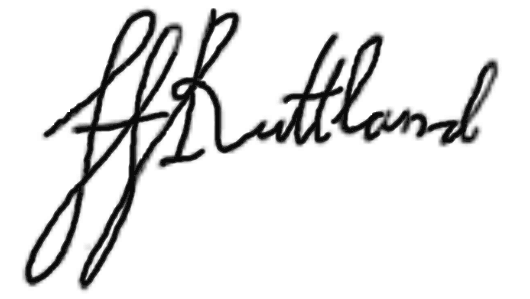

Francis MANNERS
(6th E. Rutland)
|
Born: 1578 Died: 17 Dec 1632, Bishops Stortford, Hertfordshire, England Buried: St. Mary the Virgin Church, Bottesford, Leicesterhire, England Notes: Knight of the Garter. Father: John MANNERS (4° E. Rutland) Mother: Elizabeth CHARLTON (C. Rutland) |
.gif) |
Married 1: Frances KNYVETT (C. Rutland) 6 May 1602
Children:
1. Catherine MANNERS (20° B.Ros/D. Buckingham)
Married 2: Cecily TUFTON (C. Rutland) (b. 1587 - d. 11 Sep 1653) (dau. of John Tufton and Christian Browne) (w. of Sir Edward Hungerford) 26 Oct 1608
Children:
2. Henry MANNERS (18° B. Ros)
3. Francis MANNERS (19° B. Ros)
Francis Manners, 6° Earl of Rutland
Portrait at Belvoir Castle
Second son of John, fourth
Earl of Rutland, nephew of
Edward, third Earl, and brother of
Roger, fifth Earl,
was born in 1578. He seems to have been with his brothers under the care of John
Jegon at Cambridge. In 1598 he went abroad, and in the course of his travels
through France, Germany, and Italy he was entertained by various princes,
notably the Emperor Mathias and the Archduke Ferdinand. Returning to England he
took part, like his brothers, Roger and
Sir George Manners, in
Essexs
rebellion in Feb 1600-1, and was imprisoned in the Poultry
Counter. He was fined a thousand marks and committed to the custody of his uncle
Roger at Enfield. Sir Robert
Cecil, however, obtained a remission of the fine,
and thus the affair cost little either to him or his brother George. As soon as
he was free he wrote a penitent letter to his uncle
Sir John Manners of
Haddon.
In Nov 1601 he became a member of the Inner Temple.
Margaret Flower described one of the methods of the use of Image Magic in the Rutland case when she testified that: "her mother complained to the Earl against one Peake. who offered her some wrong, wherein she conceived that the Earl took not her part as she expected; which dislike with the rest, exasperated her displeasure against him, and so she watched for an opportunity to be revenged: whereupon she took wool out of the said mattress (given to Margaret by the Countess on her dismissal from the Castle) and a pair of gloves, which were given her by Mr Vavasor and put them into warm water, mingling them with some blood, and stirring it together: then she took the wool and gloves out of the water, and rubbed them on the belly of Rutterkin her cat, saying the Lord and Lady should have more children but it would be long first." Many of the features that would later be used to make a Witch Bottle were present in the last quotation. Fabric connected with the victim is mixed with blood and water warmed and manipulated (in this case on a familiar). This key feature, is also mentioned in the Barnes text. For generations the normal remedy to employ, if you believed that you or yours had been bewitched was counter magic rather than criminal prosecution. Counter magic was the practise of turning the evil back upon the witch as in this example. When counter magic was used as 'evidence' against the Bottesford witch Anne Baker: "Being examined concerning a child of Anne Stannidge, which she was suspected to have bewitched to death: saith the said Anne Stannidge did deliver her child into her hands, and that she did no harm unto it: And being charged by the Mother of the Child, that upon the burning of the hair and the paring of the nails of the said child, the said Anne Baker came in and set her down and for one hours space would speak nothing:"
|
 to Bios
Page
to Bios
Page |
|
 to Peerage Page
to Peerage Page
|
 to Home Page
to Home Page |